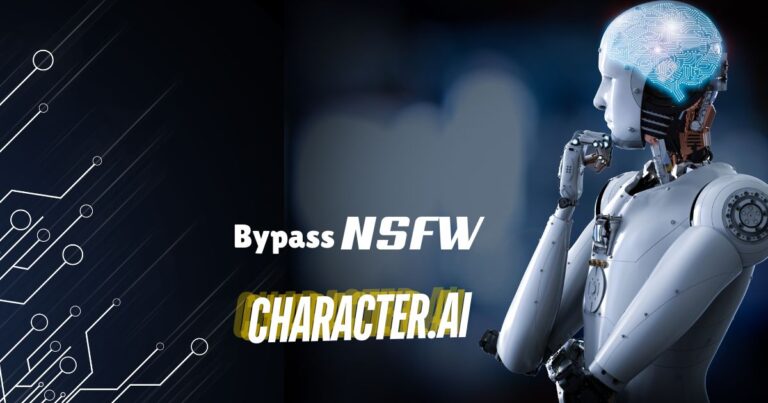Friend AI: The Wearable Companion That’s Always There for You
Imagine having a friend who’s always by your side, ready to chat, offer support, or just keep you company.
That’s the idea behind Friend AI, a new wearable device that’s making waves in the tech world.
In this article, we’ll explore what Friend AI is, how it works, and why it might be the next big thing in artificial intelligence.
Friend will begin shipping July 30th, 2025
What is Friend AI?
Friend AI is a small, pendant like device that you wear around your neck. But it’s not just a piece of jewelry it’s a smart companion powered by Claude 3.
Here are the key things to know about Friend AI:
- It’s about the size of an Apple AirTag
- It comes in different colors
- You can wear it as a necklace or clip it to your clothes
- It connects to your phone through Bluetooth
- It uses AI to talk with you and understand what’s happening around you
How Does Friend AI Work?

Friend AI is pretty clever! Here’s how it does its job:
- Always listening: The device has a microphone that’s always on, listening to what’s going on around you.
- AI powered conversations: It uses a smart AI system called Claude 3.5 to understand what you say and respond in a friendly way.
- Text messages: Instead of talking out loud, Friend AI sends you text messages through an app on your phone.
- Proactive chats: Sometimes, Friend AI will start a conversation on its own, based on what it hears happening around you.
Who Created Friend AI?
Friend AI was created by a young inventor named Avi Schiffmann.
Here are some cool facts about Avi:
- He’s only 21 years old
- He dropped out of Harvard University to work on tech projects
- He became famous for creating a website that tracked COVID-19 cases around the world
- He also made a website to help Ukrainian refugees find shelter
Why Did Avi Create Friend AI?
Avi came up with the idea for Friend AI when he was feeling lonely. He was in Japan, staying in a tall hotel building, and he wished he had someone to talk to.
That’s when he realized that AI could be more than just a tool for getting work done it could be a friend, too.
What Makes Friend AI Different from Other AI Devices?
There are other AI devices out there, like smartwatches and voice assistants. But Friend AI is special because:
- It focuses on being a companion, not just a helper
- It’s always with you, like a piece of jewelry
- It doesn’t try to replace your phone or do complicated tasks
- Its main job is to be there for you emotionally
How Much Does Friend AI Cost and When Can You Get One?
If you’re interested in getting a Friend AI, here’s what you need to know:
- It costs $99
- You can pre-order it now from the Friend.com website
- The devices are planned to start shipping in January 2025
- There’s no monthly subscription fee (at least not yet)
What Can Friend AI Do?
Friend AI is designed to be your digital buddy.
Here are some things it can do:
- Chat with you about your day
- Offer encouragement before a big event (like a job interview)
- Discuss movies or TV shows you’ve just watched
- Help you think through problems or decisions
- Make jokes or lighthearted comments
- Provide a listening ear when you need to vent
Privacy and Data: What You Need to Know
When it comes to AI and privacy, there are always questions. Here’s how Friend AI handles your information:
- It doesn’t store audio recordings or written versions of your conversations
- You can change or delete any memories the AI has about you
- All your data is tied to the physical device, so if you lose it, you lose the memories too
- The company promises not to sell your data or use it for advertising
The Pros of Friend AI
There are several potential benefits to having a Friend AI:
- Always available: Unlike human friends, Friend AI is there 24/7 whenever you need to talk.
- No judgment: You can share your thoughts and feelings without worrying about being judged.
- Personalized support: Over time, Friend AI learns about you and can offer tailored encouragement and advice.
- Combating loneliness: For people who feel isolated, Friend AI could provide a sense of companionship.
- Conversation practice: It could help shy people or those learning a new language practice talking.
The Concerns and Criticisms
While Friend AI sounds exciting, some people have worries about it. Here are the main concerns:
- Privacy: Some worry about a device that’s always listening to everything around you.
- Replacing human connections: There’s a fear that people might rely too much on AI friends instead of real human relationships.
- Emotional dependency: Some experts worry that people might become too attached to their AI friend.
- Data security: Even though the company promises to protect data, there’s always a risk with digital information.
- Impact on social skills: There’s a concern that relying on AI for friendship could affect how people interact with real humans.
What Experts Say About AI Companions
Researchers and professors have shared their thoughts on devices like Friend AI. Here’s what some of them think:
- Professor Petter Bae Brandtzæg from the University of Oslo says people often share more personal things with AI companions than they do with humans. This could be good for opening up, but it also raises privacy concerns.
- Professor Jodi Halpern from UC Berkeley worries that AI friends might be like “junk food” for lonely people. They might make you feel better for a short time, but they don’t provide the deep nourishment that real human friendships do.
How Friend AI Might Change Our Lives
If Friend AI becomes popular, it could change the way we think about companionship and technology. Here are some possible effects:
- New ways of emotional support: People might turn to AI for comfort or advice more often.
- Changing social norms: It might become normal to see people talking to their AI pendants in public.
- Evolving AI technology: As more people use AI companions, the technology could improve and become more lifelike.
- Discussions about AI ethics: There might be more debates about the role of AI in our personal lives.
- New research on loneliness: Scientists might study how AI companions affect feelings of loneliness and social connection.
Is Friend AI Right for You?
Deciding whether to get a Friend AI is a personal choice. Here are some things to consider:
- Do you often feel lonely or wish you had someone to talk to?
- Are you comfortable with technology and AI?
- Do you have privacy concerns about always on devices?
- Are you looking for emotional support or just a fun gadget?
- Can you afford the $99 price tag?
Think about these questions and talk to friends or family before deciding if Friend AI is a good fit for you.
The Future of AI Companionship
Friend AI is just the beginning of what could be a big trend in AI companionship. In the future, we might see:
- More advanced AI that can understand and respond to emotions even better
- Virtual reality or hologram friends that you can see and interact with
- AI companions designed for specific purposes, like mental health support or language learning
- Debates and maybe new laws about how AI companions should be used and regulated
How to Use Friend AI: A Step by Step Guide

If you’ve decided to get a Friend AI, here’s how to set it up and start using it:
- Unboxing and Charging:
- Open the package and remove your Friend AI device
- Use the provided USB-C cable to charge the device fully before first use
- Download the App:
- Go to your phone’s app store (iOS or Android)
- Search for “Friend AI” and download the official app
- Pairing the Device:
- Turn on Bluetooth on your phone
- Open the Friend AI app
- Follow the on-screen instructions to pair your device
- Set Up Your Profile:
- Create an account in the app
- Add some basic information about yourself to help Friend AI get to know you
- Customize Your AI:
- Choose a name for your AI friend
- Select a voice and personality type that you prefer
- Wear Your Device:
- Put on the Friend AI pendant or clip it to your clothing
- Make sure the microphone isn’t covered
- Start Chatting:
- Say “Hey Friend” to activate voice mode, or open the app to chat via text
- Begin with simple conversations to help your AI learn about you
- Explore Features:
- Try out different conversation topics
- Use the app to review your chat history and adjust settings
Remember, the more you interact with Friend AI, the better it will understand your preferences and personality.
Friend AI vs. Other AI Assistants: How Does It Compare?
While Friend AI is unique in its focus on companionship, it’s natural to wonder how it stacks up against other AI assistants. Let’s compare:
| Feature | Friend AI | Siri/Alexa | ChatGPT |
|---|---|---|---|
| Primary Function | Companionship | Task assistance | Conversation/Information |
| Form Factor | Wearable pendant | Smart speakers/phones | Web/app interface |
| Always listening | Yes | Only when activated | No |
| Proactive interaction | Yes | Limited | No |
| Personality | Adaptive to user | Fixed | Adaptable but resets |
| Privacy | No long-term data storage | Stores some data | No personal data storage |
| Cost | One-time $99 purchase | Free with device purchase | Free (basic) / 20$ per month |
Key differences:
- Friend AI is designed for emotional support, while Siri and Alexa focus on tasks like setting reminders or controlling smart home devices.
- Unlike ChatGPT, Friend AI maintains context over time, building a relationship with the user.
- Friend AI is more proactive, initiating conversations based on what it hears, whereas other AIs typically only respond when directly addressed.
Potential Future Updates for Friend AI
While Friend AI is impressive in its current form, technology is always evolving. Here are some potential future updates we might see:
- Emotion Recognition: Advanced sensors could allow Friend AI to detect your emotional state through voice analysis or even heart rate monitoring.
- Augmented Reality Integration: Imagine seeing your AI friend as a hologram through smart glasses, making the interaction feel more real.
- Expanded Language Support: Future versions could offer real-time translation, allowing you to practice different languages with your AI companion.
- Health Monitoring: The device could incorporate features to track your physical health, offering wellness tips and reminders.
- Smart Home Integration: Friend AI might be able to control your smart home devices, combining companionship with practical assistance.
- Group Interactions: Multiple Friend AI devices could interact with each other, facilitating group conversations or games.
- Customizable Appearances: Users might be able to design how their AI friend looks in the app, making the experience more personal.
These potential updates could make Friend AI even more versatile and helpful in the future.
Real World Scenarios: How People Might Use Friend AI
To better understand how Friend AI could fit into daily life, let’s explore some potential use cases:
- The College Freshman: Sarah is nervous about starting college. She uses Friend AI to practice introducing herself and to get pep talks before social events.
- The Elderly Widower: Mr. Johnson, recently widowed, finds comfort in chatting with his Friend AI about his day and reminiscing about old times.
- The Busy Parent: Maria, a working mom, uses Friend AI to vent about her stressful day during her commute home, helping her relax before seeing her family.
- The International Student: Yuki, studying abroad, practices his English conversation skills with Friend AI and asks for clarification on cultural norms.
- The Night Shift Worker: Tom works nights at a warehouse. He chats with Friend AI during breaks to stay alert and combat the loneliness of odd hours.
- The Anxious Teenager: Emma uses Friend AI to work through her anxious thoughts before big exams, getting encouragement and calming advice.
These scenarios show how Friend AI could provide support and companionship in various situations.
Technical Specifications of Friend AI
For the tech-savvy readers, here are some of the key technical details of the Friend AI device:
- Size: Approximately 1.5 inches in diameter, 0.3 inches thick
- Weight: About 0.5 ounces (14 grams)
- Battery Life: Up to 7 days on a single charge
- Charging: USB-C port, full charge in about 2 hours
- Connectivity: Bluetooth 5.0
- Microphone: High-sensitivity, omnidirectional microphone
- Speaker: None (to maintain privacy, all audio output is through the phone app)
- Water Resistance: IPX7 (can withstand immersion in 1 meter of water for 30 minutes)
- Processor: Custom AI chip for on-device processing
- Storage: 4GB internal storage for AI model and user data
- Compatibility: iOS 13 or later, Android 8.0 or later
These specs show that Friend AI is designed to be lightweight, durable, and efficient, with the processing power needed for sophisticated AI interactions.
Psychological Impacts of AI Companionship: A Deeper Look
As AI companions like Friend AI become more prevalent, it’s crucial to consider their psychological impacts:
- Emotional Attachment: Users might develop strong emotional bonds with their AI friends. While this can provide comfort, it’s important to maintain a balance with human relationships.
- Dependency: There’s a risk of becoming overly reliant on AI for emotional support, potentially hindering the development of coping skills.
- Social Skill Development: For some, practicing with an AI could improve confidence in social situations. However, it’s crucial to apply these skills with real people.
- Validation and Self Esteem: Constant positive feedback from an AI could boost self-esteem, but it might also create unrealistic expectations for human interactions.
- Privacy and Vulnerability: The ease of sharing personal information with an AI might make users more vulnerable if data breaches occur.
- Cognitive Effects: Regular interaction with an AI could potentially enhance certain cognitive skills, like verbal fluency or problem-solving.
- Ethical Considerations: As AIs become more advanced, questions arise about the ethics of forming emotional bonds with non-sentient entities.
Psychologists emphasize the importance of using AI companions as a supplement to, not a replacement for, human interaction. It’s also crucial for users to maintain awareness of the AI’s limitations and non-human nature.
As we continue to integrate AI companions into our lives, ongoing research will be vital to understand and mitigate potential negative impacts while maximizing the benefits of this technology.
Conclusion
Friend AI represents a new chapter in how we interact with technology. It’s not just a tool or a gadget it’s designed to be a companion, a listener, and a source of support.
While it raises some important questions about privacy and the nature of friendship, it also offers exciting possibilities for combating loneliness and providing emotional support.
As AI continues to advance, we’ll likely see more devices and applications that blur the line between technology and companionship.
Whether Friend AI becomes the next big thing or remains a niche product, it’s clear that the way we think about artificial intelligence and its role in our lives is changing.
What do you think about Friend AI? Would you want an AI companion, or do you prefer to stick with human friends? As this technology develops, it’s important for all of us to think about these questions and decide what role we want AI to play in our lives and relationships.






